
Lacabezonada

Pictures: 29.xii.2011, 22.iii.2016


Pictures: 29.xii.2011, 22.iii.2016

Los Molinos de La Fuevamantled the mill with a huge canvas over its roof and supports were placed under the beams. It didn't help much, because the cover was soon blown away. In 2016 we saw the blue sky through the roof. If nothing can be done soon, La Fueva will lose this marvel. That would be a real shame.

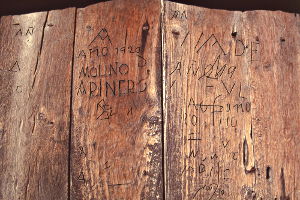
The wooden lintel above the door shows the year 1831. The door itself is covered with numerous engravings (3).
Many As
and incomplete Años
, some initials (typical behaviour of visitors of the wrong kind),
difficult to interpret strokes and also one relatively clear inscription Año 1920 Molino Arinero
.
The doorjambs are from stone and they show protective crosses but very few, nothing like the many in Foradada del Toscar nearby, or Abellada.


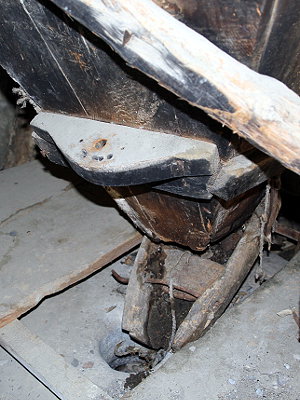
The installation at hand is of an earlier type with a tolva which hangs out of the center of the stones. The grain is fed from the hopper into a feed-shoe (canaleta) (6). We have not seen a swivel hopper at any other place in our study range, not even in Ainielle —the feeding mechanism there is mounted on the wall. This is a unique piece, apart from the replica in Los Molinos. The hopper is mounted on three points. Two arms are fitted to the axle (5) and support the hopper from below. From the upper ridge of the tolva a curved piece of wood is protruding (8) and fits into a slit of the axle. A pin keeps the hopper tight.
Hidden behind the tolva there is a small triangular opening in the wall facing the North. Through this opening the miller could keep an eye on the chute (11) and the water before it entered the cárcavo.
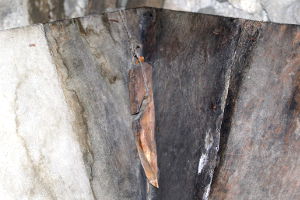
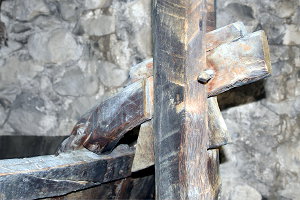
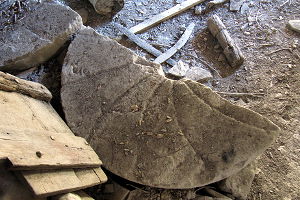
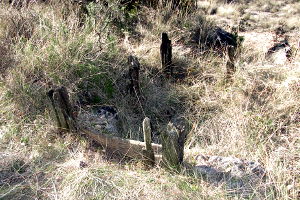
The canal ends in an open chute, several meters long (11) and composed of wooden beams, which are fixed to each other by a scarf joint reinforced with a nail.
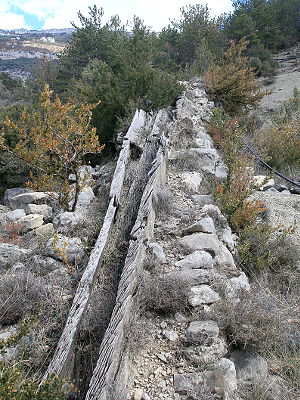
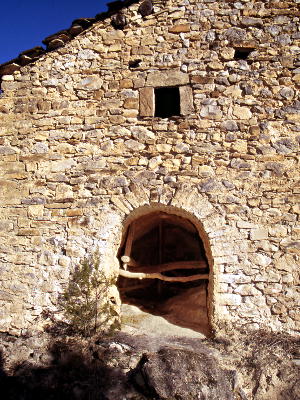

paradera)
Vaut le détour— and justifies the small risk of getting wet.
The mouth of the cárcavo is rather narrow for its height (12) and the arch is not entirely symmetrical.
Inside, its section is triangular (13, 15) and it looks like maximum use was made of the shape of the natural rock! It must have been a huge task to pierce the shafts for the axletree of the wheel, and for the lightening (levador) and the stopping mechanisms.
The rodete
and the árbol
(wheel and its axle, 13) are made of wood.
The wheel is really something: it is a solid wooden dish made of planks (14). The blades
are wedged boards driven into slits in the dish. I have never seen this kind of
rodete elsewhere in the wide region!
Notice the unusually numerous beams which are present in the cárcavo (12).
They form the braking system, the paradera
(15 - 17). Because of the open chute
there is no botana
with a valve with which the miller could cut the flow when
the tolva became empty or a stop was needed for any other reason.
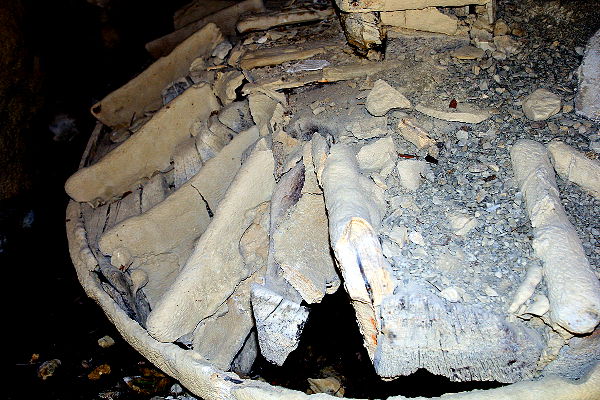
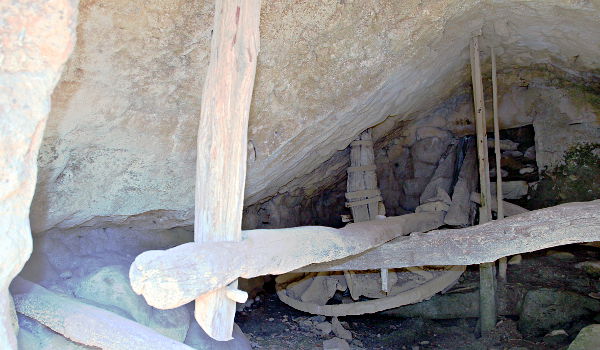

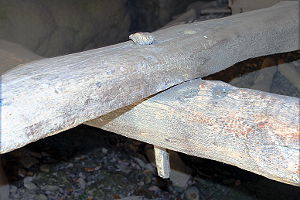
† Molino de Lacabezonada —consulted V.2017— SIPCA - Sistema de Información del Patrimonio Aragonés: website at www.sipca.es
‡ Another make of paradera can be seen in the mill of Pedro Buil in Sarsa da Surta.